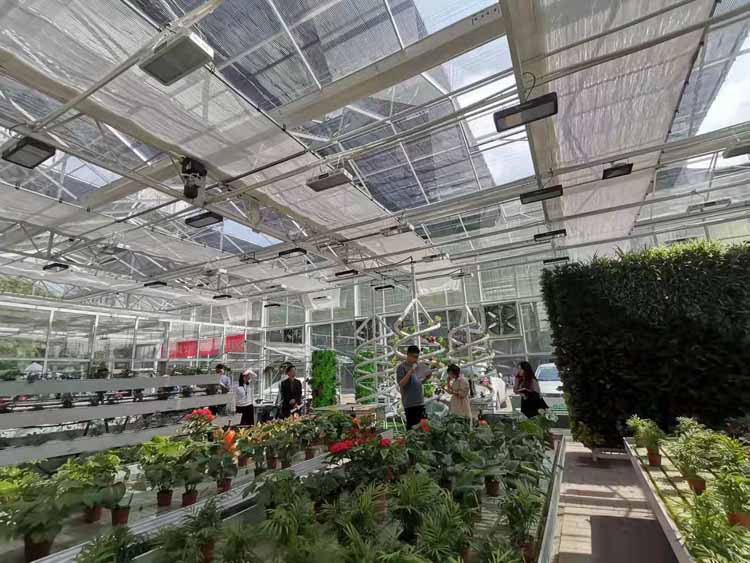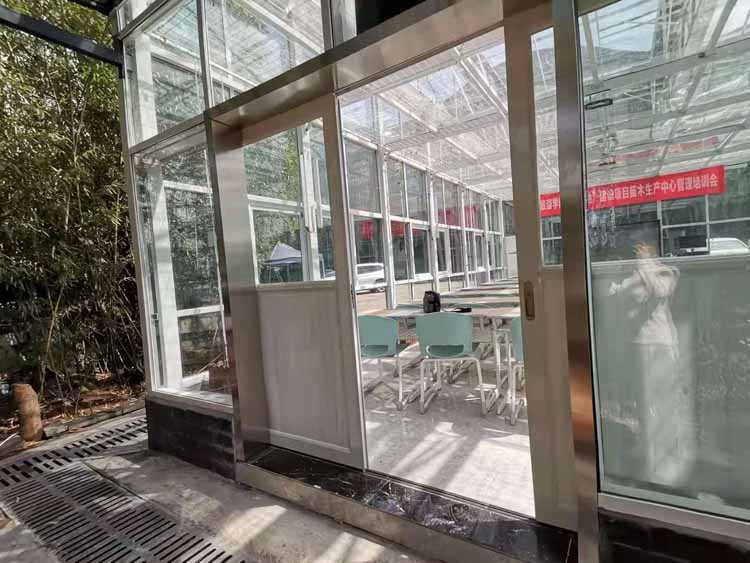Analysis of the Four Characteristics of Photovoltaic Smart Greenhouse Construction
With the proposal of energy conservation and emission reduction, and the development of modern agriculture, the construction of photovoltaic smart greenhouses has become the highlight of agriculture. Smart greenhouse construction is a greenhouse that integrates solar photovoltaic power generation, intelligent temperature control system, and modern high-tech planting. The main body of the greenhouse is made of steel frame, and the top is covered with solar photovoltaic modules, which can meet the needs of solar photovoltaic power generation and lighting of crops inside the greenhouse at the same time. The power generated by solar photovoltaic can be used in the greenhouse irrigation system, which can supplement the light for plants, and can also solve the heating demand of greenhouses in winter. It can not only effectively reduce the cost of electricity, but also improve the operating efficiency of the greenhouse.
Four characteristics of photovoltaic smart greenhouse construction:
1. Effectively alleviate the contradiction between man and land, and promote the sustainable development of social economy
Photovoltaic greenhouse power generation components use the top space of agricultural greenhouses, do not occupy the ground, and will not change the nature of land use, so it can save land resources. It can play an active role in "reversing the large decrease of cultivated land under the situation of large population increase". On the other hand, the photovoltaic greenhouse is built on the original agricultural land, and the land quality is good, which is conducive to the development of modern agricultural projects, the development of modern agriculture and supporting agriculture, and is conducive to the combination of the secondary and tertiary industries with the primary industry. And it can directly increase the economic income of local farmers.
2. It can flexibly create an environment suitable for the growth of different crops
By erecting solar panels with different light transmittances on the intelligent greenhouse construction, it can meet the lighting needs of different crops, and can grow organic agricultural products, valuable seedlings and other high value-added crops, and can also realize off-season planting and high-quality planting.
3. To meet agricultural electricity demand and generate power generation benefits
The use of photovoltaic power generation can meet the power needs of smart greenhouses, such as temperature control, irrigation, lighting supplementary light, etc., and can also sell electricity to the grid company to realize profits and generate benefits for investment companies.
4. A new path for green agricultural production
Compared with traditional agriculture, smart greenhouse planting pays more attention to the investment of scientific and technological elements, more attention to management, and more attention to the improvement of the quality of laborers. As a new type of agricultural production and operation mode, it will promote the promotion and application of regional agricultural science and technology. , through the realization of agricultural technology and agricultural industrialization, it will become a pillar industry for regional agricultural efficiency and farmers' income.
With the rapid development of protected horticulture, intelligent greenhouses have emerged. It is an advanced type of protected agricultural species and has a comprehensive environmental control system. With this system, many factors such as indoor temperature, light, water, fertilizer, and gas can be directly adjusted. , can achieve high yield throughout the year, steadily fine vegetables, flowers, and good economic benefits.
It can be seen that as a new form of comprehensive land utilization, photovoltaic smart greenhouses are the product of the close combination of modern agriculture and clean energy. The proportion of renewable energy brings two-way benefits.








